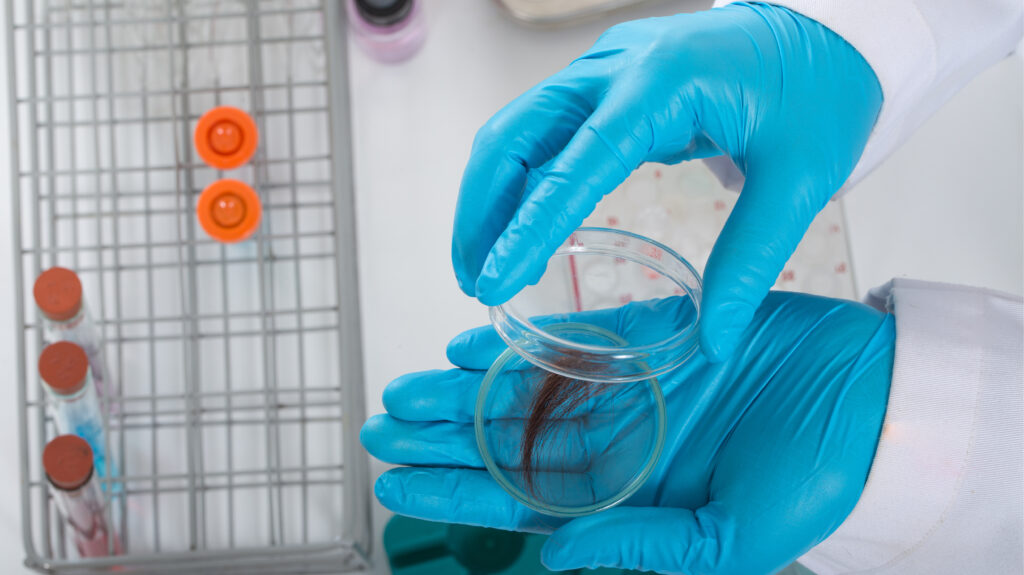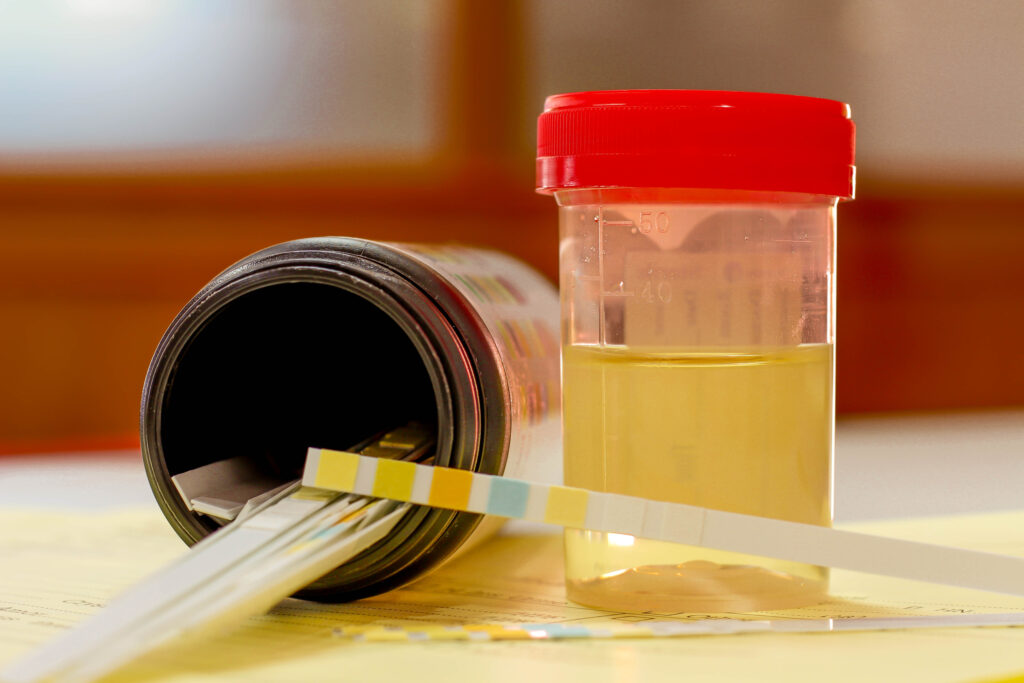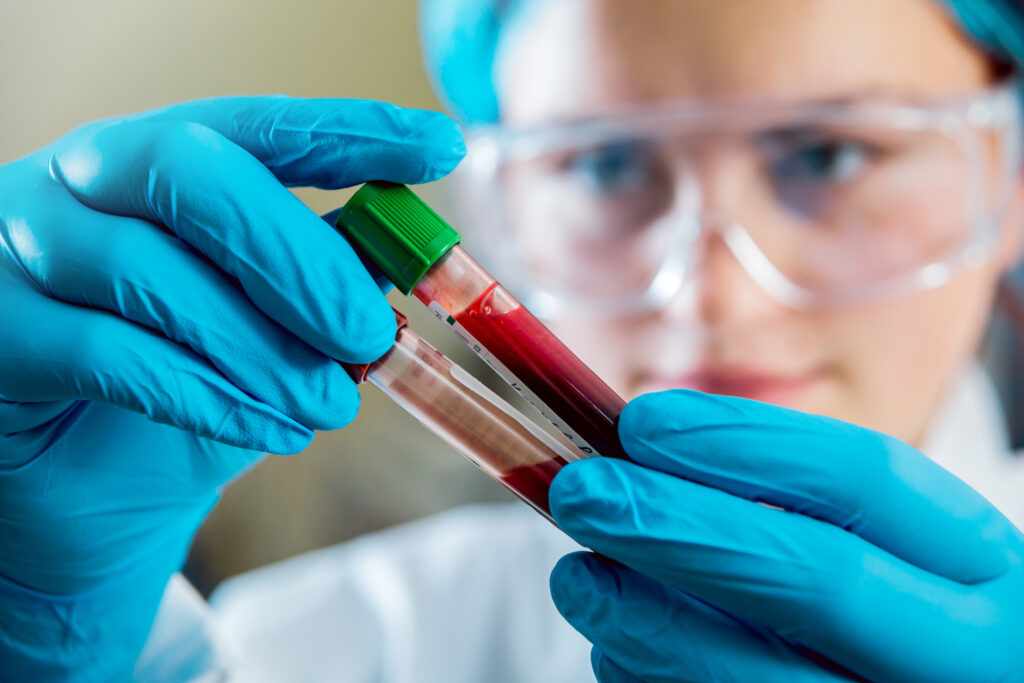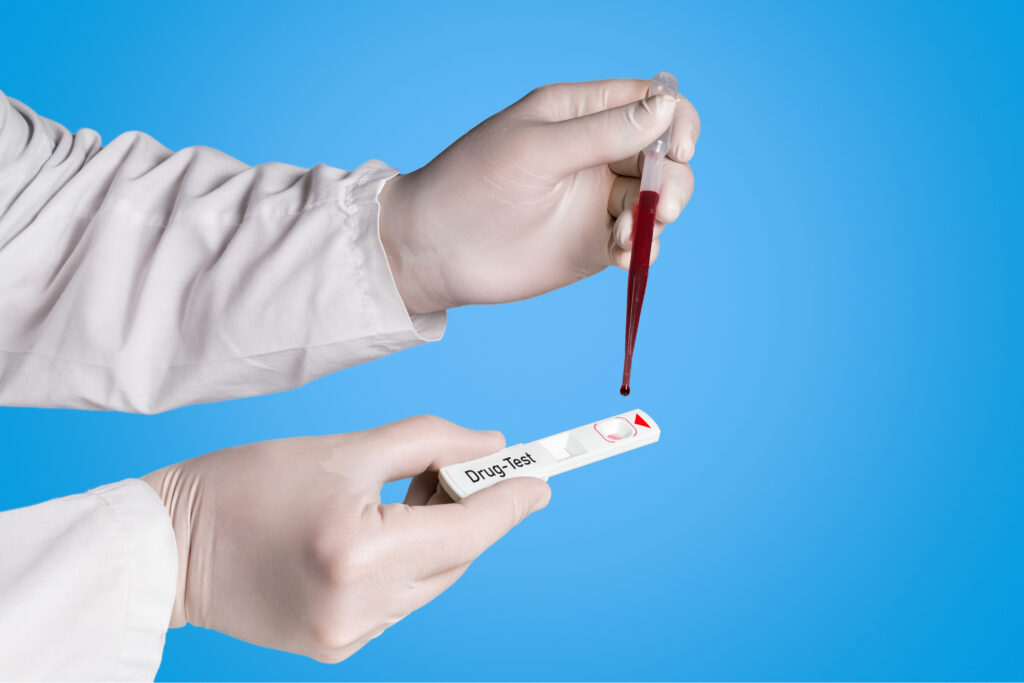A comprehensive guide to drug screenings: Everything employers need to know
Employers want their employees to be healthy, productive and safe. Drug abuse is something that can affect all three of those things in a negative way.
That’s why drug screening tests have become an important part of any employer’s hiring process. Unfortunately, the world of drug testing services has grown more complicated over time with the introduction of new drugs and new types of screenings.
This article will cover everything employers need to know about DOT physicals, drug abuse screening tests and drug testing centers so
they’ll feel confident when choosing which company to use for this service for their business.
Employers typically design drug testing and drug free workplace programs to help protect their employees and their business from the
negative impacts drug abuse can create.
This is a guide for employers to help them understand how drug abuse impacts their employees. It will also cover DOT physicals and the
various types of drug tests that are available, including urine screens and hair follicle testing (although this type is not often used). The article will include information on why it’s important to test your employees and what you can do if you do have employees battling addiction.
Schedule an appointment. 24 hour on-site service available.


What is drug screening? Drug testing is the process of detecting and quantifying drugs in one's body.
There are two types of drug tests: urine and hair. Urine tests detect current use, whereas hair follicle test can reveal a person’s long-term history of substance abuse or addiction over a period ranging from three months to as long as a year depending on how often they shampoo their scalp with harsh chemicals that strip away hairs’ protective oils. Hair follicle drug screenings also have higher detection rates than urine screens because it takes less time for recent drug consumption to show up on someone’s head than in their system if ingested via another route, such as orally or intravenously.
– Drug Screening Tests: includes a discussion on drug testing and screening tests to help identify whether your employees may be abusing drugs.
– DOT Physicals: covers the requirements for annual DOT physicals in order to keep drivers safe from accidents due to substance abuse.
The fact is that every employer needs this information before they choose which company or service provider to work with when it comes time for their own drug testing program. Employees need assurance, too, so you want them to know what they’re signing up for if they’re being offered these services at their place of employment.
The most important things to know about employment drug and alcohol tests:
– The drug screening tests will be looking for more than just marijuana, opiates and cocaine. There are other substances to look out
for as well that can’t always show up in the same type of testing like amphetamines or LSD.
– Drug screenings won’t catch all abuse if your employees have become addicted to drugs because it takes time between when they take their last dose of a substance until it shows up on these types of tests. That’s why DOT physicals are so important too – those medical exams help identify whether someone is struggling with addiction before they get behind the wheel.
– Employers need to know what sort of clinical services may be available at one facility versus another company because some
employers may have employees with more unique issues, and may want to offer them help.
– Drug testing centers can be a source of conflict in workplaces. Harassment, discrimination and retaliation are all potential legal issues that employers need to know about before they take on drug screening services for their company.
So what should an employer do?
First, make sure you’re familiar with the DOT Physical requirements for CDL drivers because those vary from state to state – taking these steps will help keep everyone safe on the roadways. If someone has an addiction or substance abuse problem but is not yet struggling enough to warrant treatment at this point, then it is important to ensure there’s no interaction between substances being abused and performance while driving a commercial vehicle; after all, we don’t want anyone getting seriously injured or killed due to a substance abuse issue that could have been caught.
- Second, if you’re implementing drug screening services for employees and they want to know whether or not it will be a random test- the answer is yes. Drug screenings can’t be fairer than that; there’s no way of knowing who has an addiction issue without being caught in the act. This doesn’t mean all tests are going to happen randomly though – for DOT Physicals, drivers have been notified ahead of time when these tests would take place because safety always comes first over everything else. If your company does plan on doing random drug testing, then it needs to handle things differently depending on what kind of event the person was subjected to before taking their final drug screen:
- First, if a DOT Physical was performed and the driver passed with flying colors – they can be considered “clean” for five years.
- Second, if a DOT Physical was completed and the results were negative but also flagged “questionable,” it’s advised to retest in order to ensure that there weren’t any mistakes made during testing or anything else going on. That way we know what needs to happen next – waiting until someone is completely clean before letting them go back out into traffic? Or clearing everything up right then so that person can get help ASAP?
- Third, if drug screening services are being deployed as random tests (unexpected) and come back positive- this could mean an instant termination since these people knew ahead of time by signing their employment paperwork and testing waiver that this was to be expected.
The DOT Physical is a drug screening test for people who are in careers that involve driving and safety, such as truck drivers or bus
drivers. It’s a requirement to have one before being hired by the company so it can measure any possible impairment caused by drugs
(including alcohol). This helps keep our highways safe from accidents due to impaired employees of these companies.
Additionally, if someone tests positive on their drug screen and an expected DOT Physical test comes back negative- meaning they’ve been clean for at least two weeks – this could be seen as grounds for termination since there was already evidence given proving them guilty without warning. Random testing is usually only done once per year with consequences attached immediately if certain requirements aren’t met. This may seem harsh but in jobs with as much potential to do harm as these, it’s important to take swift action. Even one mistake can cause many lives.
Drug tests are a big part of the DOT Physical process. DOT stands for Department of Transportation, which has specific rules and regulations in regards to certain types of jobs that can require drug testing. These include driving heavy or hazardous material vehicles like buses and tractor-trailers as well as handling radioactive materials, explosives, combustible liquids such as oil and gas products, toxic pollutants or any other substances with potential dangers if not handled properly. It’s important for everyone from employees to
employers to be aware of these standards put forth by DOT because they’re designed specifically to keep our highways safe from accidents due to impaired drivers who may have been using drugs (including alcohol).
Hair Drug Tests.
Hair Drug tests, formerly known as hair follicle tests, provide a longer term view of drug use, covering a minimum of 90 days. The tests measure the drug substances on either a strand of hair or an entire head of hair. Hair is more resistant to external contamination, so
strands are cut from different regions of the body and tested for drugs at high sensitivity levels in laboratories. A hair drug test, however, does not detect alcohol abuse.
Timeframe: A hair drug test’s timeframe ranges from three months to as long as a year, depending on the length of the person’s hair. The time it takes for drugs used in short-term periods to show up on a person’s head is also shorter than that found in urine tests; therefore this type of screening can be more effective at detecting chronic drug abuse and addiction.
Detection Rates: Drug detection rates are dependent upon an
individual’s age, gender, ethnicity, body mass index (BMI), dieting
history and frequency of workouts. Detection rates vary by substance
but generally range from one day to six weeks after initial use.
What kind of substances can a hair test detect? First of all it’s important to know that a hair test will not detect current drug abuse,
only past drug abuse. The reason for this is because drugs and their metabolites are only detectable in hair as long as they remain within the shaft of each individual strand.
What’s an example of a drug that can be detected using a hair-based test? The most common form on drug testing, including urine tests, would be marijuana (THC). THC will show up on a person’s head for about four months after initial use, making it one of the longer detection periods among drugs screened by hair analysis.
Hair can be tested for cocaine, marijuana, opiates, methamphetamine and phencyclidine. To perform the test technicians will cut a small amount of hair close to the scalp in order to detect drug use by examining drugs that may have been ingested or inhaled through
breathing over time as they are deposited into individual strands of hair.
Hair samples provide an affordable way for employers from all industries to get insight about their employees’ health without having
them undergo expensive medical tests. It also gives them a window into a longer piece of their historical drug use in situations where that is critical information.
The hair sample can provide a better window into drug use over the last three months than urine samples, which are often tested for only days of drug use. Hair-testing also provides insight such as alcohol consumption and tobacco smoking or inhalation that is not reflected in typical urinalysis tests.
However, there are some limitations to this type of testing: For example, someone who has used marijuana four times within the past month but hasn’t consumed it during the previous two weeks may have no traces of THC detectable on their scalp because they show up more quickly in urine.



Urine drug and alcohol tests:
A urine drug test is a common method of screening job applicants and employees for the presence of illegal drugs or alcohol use. Urine tests may be required as part of pre-employment screenings or conducted randomly by employers, especially those in certain occupations where substance abuse could significantly impact performance on the job.
The main differences between urine tests and hair tests are the frequency of use and the detection time.
Urine tests can detect drug use in as little as three days, which is longer than a hair test but shorter than an oral fluid (saliva) test.
Oral Fluid Drug Tests:
Compared to urine testing, saliva testing shows up more quickly after recent drug exposure because it primarily screens for substances that are still active in the body at that minute. This means a drug user could potentially pass a saliva test even if they have been clean for weeks or months — making it difficult to determine how long someone has used drugs based on their results alone without examining other factors like age and lifestyle habits.
To combat this issue, some employers will require applicants to submit both a urine test and an oral fluid or hair test to get a more complete picture of potential drug abuse.
Blood tests:
A blood drug test can be used to determine if an employee is actively under the influence of drugs or alcohol. It allows employers and law enforcement officials to determine whether a person has been using substances such as marijuana, cocaine, opiates, etc.
A needle stick is required for this method but there’s little chance for adulteration because it checks levels from recent hours rather than in past days – much like urine tests do now with the exception that these are invasive while urinalysis only requires taking a sample on your hand then putting it into some kind of testing device which will give you results within minutes.
How long does it typically take to the get the results from a drug abuse screening test?
If you are looking for a quick turnaround, then the answer is less than 24 hours. However, if your drug screening test involves hair testing or urine tests to detect drugs in the system and they require lab analysis before results can be generated, it could take between three days and two weeks to get back with positive findings.
Rapid Screening Tests:
Rapid testing has many benefits, such as being able to detect more drugs that might metabolize quickly and not be detectable at a later screening. You can do it with your employer or from the comfort of a local laboratory clinic. Breath alcohol confirmation may also be required for any positive screens for alcohol after an instant test comes back negative.
10 panel tests
Employers may elect to conduct a ten-panel drug test, which includes the following: methadone and other narcotic prescription drugs; benzodiazepines (such as alprazolam, oxazepam); barbiturates (such as amobarbital, butalbital or pentobarbital) Quaaludes are no longer available on US markets. Alcohol testing can also occur. Other more recent designer drugs of abuse may be included in this analysis if they pose an issue at your workplace based on federal requirements/state guidelines etc.
Can employers drug test in states where Marijuana is legal?
Employers can drug test for marijuana in states where it is legal as long the requirements of federal guidelines are met. For example, if you work at a military base or nuclear facility, your employer may be required to have an alcohol and other drug testing program that includes testing for marijuana. In most cases, employers should check with their state laws before proceeding with cannabis screening tests; however, there is no denying the increase in positive screens from THC over time – even after just one-time usage (i.e. a party).
What about random drug screenings?
Random Drug Screenings: Employers do not need justification to conduct these types of screenings except when they’re looking for impairment on job site tasks/duties.
What is typically considered reasonable suspicion for drug testing purposes?
Reasonable Suspicion: Employers usually may request that employees submit to drug and/or alcohol testing if there is a reasonable suspicion of substance abuse. These are typically related to observed behavior or performance, as well as the consequences of use in work place accidents. You should consult an HR or drug screening specialist in your area to make sure you follow proper procedure though.
You can always call us with any questions regarding employee drug screening by clicking here: or email us at:
What is an example of post-accident drug screening?
Post-Accident Drug Screening: Post accident drug screenings are conducted by employers when they seek to establish responsibility for accidents involving personal injury or property damage. Employees who refuse these tests will be terminated immediately on grounds of suspected illegal activity (i.e., OWI).
Can a drug screening test give a false positive?
Yes, a drug screening test can provide false positives. There are many factors that may contribute to this “false-positive” outcome such as:
* Hair follicle test (longer detection period)
* Drug abstinence or detoxification process which takes weeks and months for the body to clear out all traces of drugs in the system. This is especially true with chronic users who have high concentrations of metabolites stored up in their fatty tissue cells; these folks will show positive results not just from use on the day they took the drug screen but also from earlier use during periods when they were not being monitored by anyone. ment
* The most common reason for ‘false positives’ due to laboratory error is called “misclassification.” This is where a legal substance is flagged as an illicit one by classifying the results incorrectly.
Can you legally require an employee to take a drug test?
* The answer is yes, but with some limitations. Employers can require drug testing as a condition of employment only if:
- Testing is required by federal law or regulations in accordance to one’s occupation;
- There are certain safety-sensitive positions; and/or
- Drug abuse screening tests are part of the employee health program.
What about state laws? Can you test for drugs at work even without these requirements?
* Yes, employers may impose conditions on an offer of employment that include any lawful requirement including post-offer pre-employment restrictions pursuant to state law (if applicable).
Again, always consult with a specialist before setting policies that could have legal ramifications in place, these are generally true guidelines, but the laws around drug use and personal rights change regularly.
Do you have to fire an employee for a failed drug test?
* No, you may work with the employee by creating an action plan for them to follow.
In addition, there are some companies that offer rehabilitation services and will pay transportation costs in order to make sure they get their employees help if needed.
What about other substances like nicotine or alcohol? What happens when these tests come back positive on a drug screening?
* If someone is using prescription drugs legally prescribed from a licensed physician then this should not be of any concern unless your company has specific rules against it; however if one was smoking cigarettes (nicotine) or drinking alcohol then those would show up as well during testing so again always consult legal experts before going all in on something like this because it could potentially cause some negative legal consequences for your company.
Is pre-employment drug testing common?
* Drug testing is not common for pre-employment screening because of the cost, but drug tests are frequently used as part of a larger background check.
What about random drug screenings in safety sensitive positions?
* Random drug screens are more frequently done for employees who work in “safety sensitive” positions and in some cases there are specific regulatory requirements that require it.
Have more questions? Feel free to contact us here: